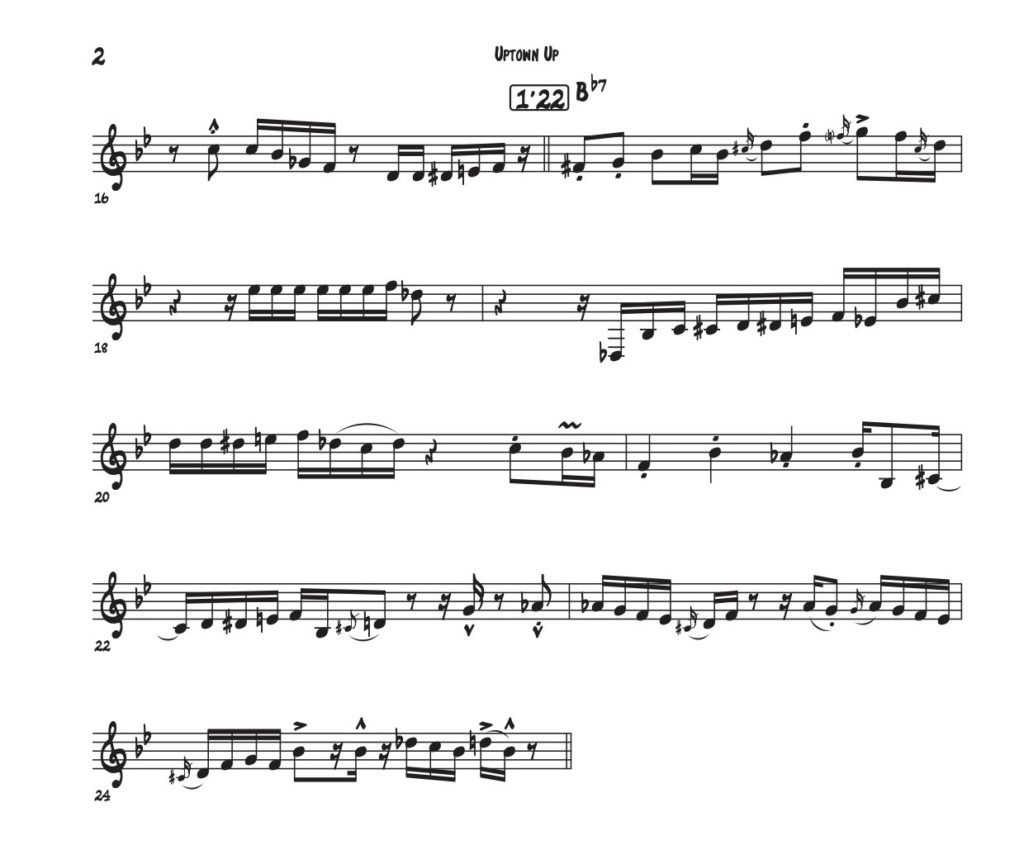This article is also available at www.lessonface.com/content/away-roost-reharmonizing-chicken, along with a downloadable Reharm Worksheet (PDF).
Here are a few notes about Flavio Lira‘s “THE CHICKEN Travels the World,” a cool multi-groove arrangement of “The Chicken.” Flavio invited me to record it over at Lessonface’s studio in New York’s West Village earlier this year, along with some fantastic musicians, most of whom teach on the platform as well. Each of us also got to record a short tutorial (see right below) to showcase something we played in the video. Fun times!
Now, let’s try and make the most of the present article and focus on things I did not mention in the tutorial video…
- The original piece (“The Chicken” by Pee Wee Ellis) is a funk tune with a bluesy feel. Although its chord changes don’t follow the most common 12-bar blues format, the tune does possess one of the foremost features of the blues: the appearance of the IVth degree as a dominant chord (Eb7) in its 5th bar. Besides, blues scales and minor pentatonics (Bb minor in particular, as in the famous break in bar 12 for instance) suit the chord grid perfectly (for more on the use of blues scales, take a look at this post, an in depth analysis of a solo by one of Mr. Ellis’ close fellow funkateers!);
- Where the keyboard solo starts in the arrangement, Flavio deliberately penciled in a BbMa7 chord (instead of the original Bb7), which gives this section a more “tonal” feel (as opposed to the original “bluesy” feel, characterized by some amount of ambiguity and crunchiness caused by the presence of both the major third – from the Bb7 chord – and the minor third – from the Bb minor pentatonic or blues scale frequently used to improvise over Bb7). Flavio further enhances that sense of tonal harmony with a II-V resolving to Gmi7, the VIth degree in the key of Bb major. D7 is what we call a secondary dominant resolving to that Gmi7, and the Ami7(b5) is D7’s related II chord (incidentally, it is also the VIIth degree in the key of Bb major). The Bb7 preceding Ami7(b5) is a sub V of VII (in other words, the tritone substitute of E7, which would have been a “regular” secondary dominant to Ami7(b5));
- By now, our ears may well have been accustomed to a Bb major tonal context… And when the Eb7 chord finally hits (at the pinnacle of a nice rhythmic ascending chromatic motion), it can quite plausibly be heard as a modal interchange chord (the IVth degree of Bb dorian) rather than the characteristic IV7 blues chord mentioned earlier.
To sum up, we have a deliberate choice of Flavio’s to depart from the original blues context of the tune and delve into a more tonal realm for this section of his arrangement. Our chicken is, at the very least, cage-free, and at best truly multi-dimensional, traveling through various grooves and harmonic devices! More seriously though, this classic reharmonization technique has in fact been used since the bebop era. Take a jazz standard like “Au Privave” for example: it is a perfect illustration of how Charlie Parker departs from a simple F blues progression to get to a tonal 12-bar form in the key of F major, complete with II-Vs, secondary dominants, and modal interchange.
Visit http://funnelljazz.eu/lessons/ for detailed information about lessons or click on the image below to book your lesson today:





